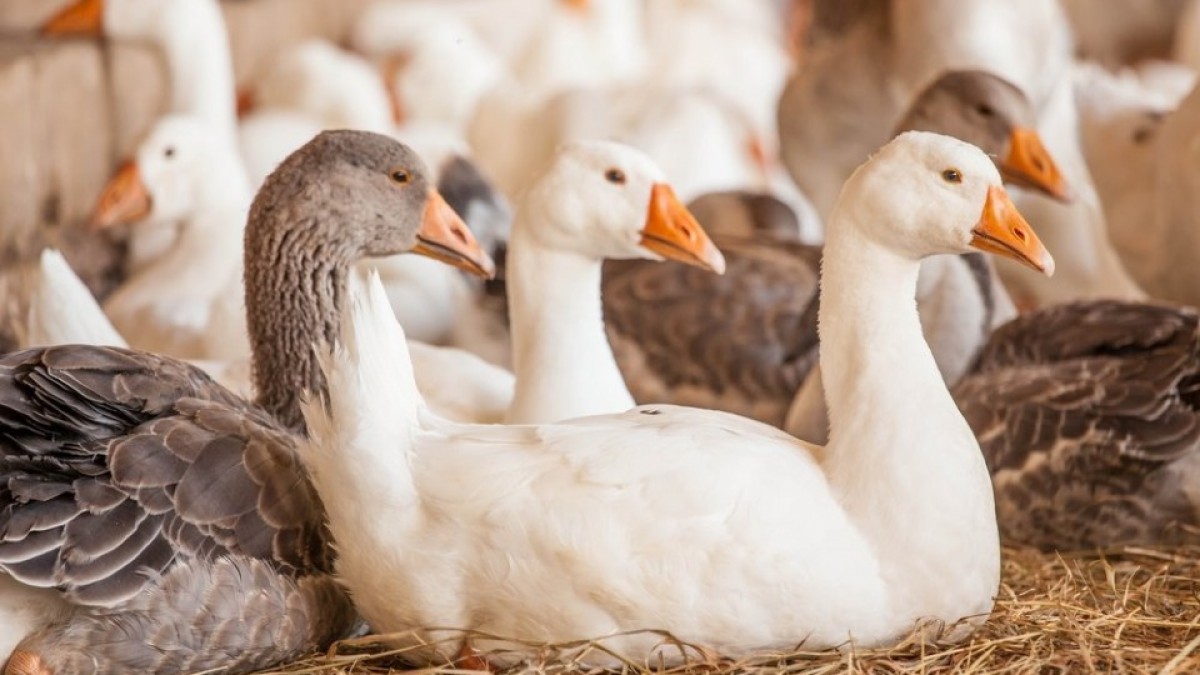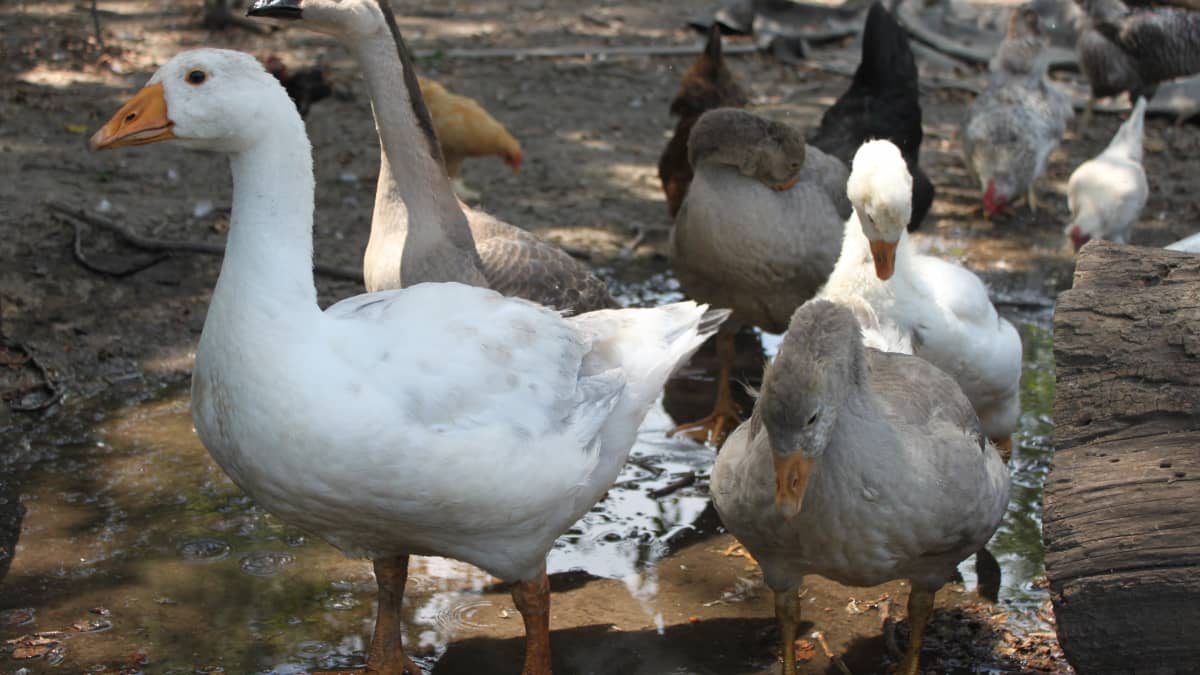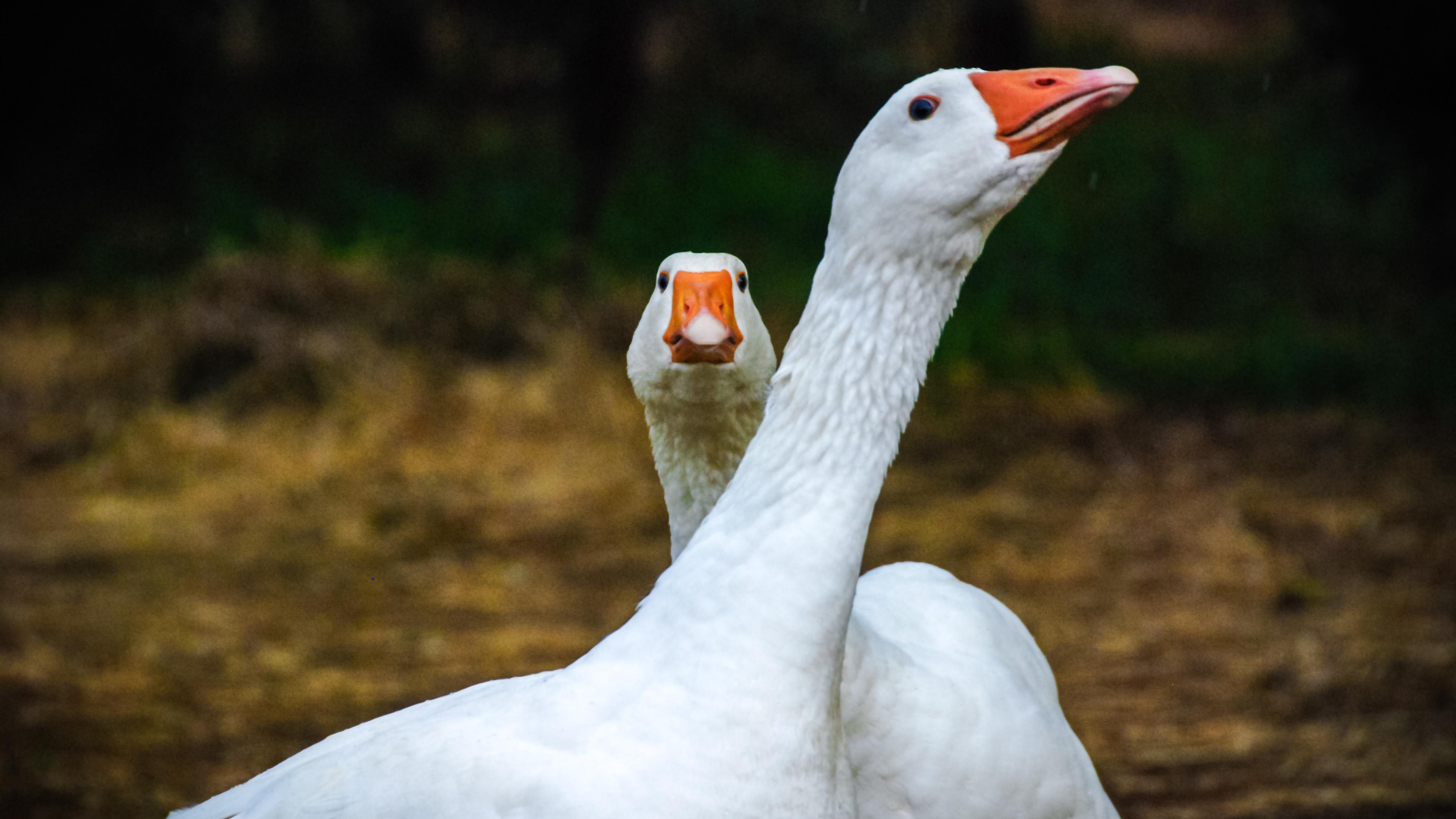
Geese are fascinating creatures that are known for their distinctive honking sounds, graceful flight, and their presence in parks and wetlands. These waterfowl are found in various parts of the world and have captured the curiosity of humans for centuries. In this article, we will explore 19 interesting facts about geese, shedding light on their behavior, characteristics, and unique adaptations.
Geese are Social Birds
Geese are highly social animals and are often seen in large groups known as flocks or gaggles. They have a strong sense of community and rely on their flock for protection, foraging, and navigation during migration. They communicate with each other through a variety of vocalizations, including honking and hissing sounds.
Geese are Excellent Fliers
Geese are well-known for their impressive flying abilities. They have strong wings and are capable of flying long distances during migration. Geese fly in a distinctive V-shaped formation, which helps them conserve energy by taking advantage of the uplift created by the bird in front of them. This formation also allows them to maintain visual contact and communicate with each other during flight.
They are Herbivores
Geese are primarily herbivorous, meaning they feed on plant material. They graze on grass, leaves, stems, and aquatic vegetation. Geese have a specialized beak that is adapted for tearing and grinding plant matter. They also have serrated edges on their tongues, which helps them grip and pull vegetation.
They are Monogamous
Geese form strong pair bonds and are generally monogamous. Once a pair bond is formed, it usually lasts for life. They engage in elaborate courtship displays, which involve head-bobbing, honking, and wing-flapping. During the breeding season, geese build nests together and both parents take turns incubating the eggs and caring for the young goslings.
They are Protective Parents
Geese are highly protective parents and will fiercely defend their nests and goslings from potential threats. They will aggressively chase away predators, including other animals and humans if they perceive them as a threat to their young. Geese are known to be particularly protective during the nesting period and will exhibit aggressive behavior if their nest is approached.

Geese Mate for Life
Once geese form a pair bond, it is typically for life. This lifelong commitment is seen in their behavior and interactions. They will stay together year-round, migrating and wintering together as a bonded pair. The bond between geese is strong and serves as a foundation for successful breeding and raising offspring.
Geese are Excellent Navigators
Geese have a remarkable ability to navigate over long distances during their seasonal migrations. They use various cues, including the position of the sun, the Earth’s magnetic field, and landmarks to navigate their way. Young geese learn the migration routes from their parents and older members of the flock, ensuring the continuity of the migratory behavior.
They are Well-Adapted to Water
Geese are well-adapted to aquatic habitats. Their webbed feet enable them to swim gracefully and paddle through the water. They have oil glands near the base of their tail, which produce an oily substance that they spread over their feathers during preening. This oil acts as a waterproofing agent, keeping their feathers dry and allowing them to float on water without getting soaked.
They Have a Complex Communication System
Geese communicate with each other using a range of vocalizations and body language. Their honking calls are a common and distinctive sound associated with geese. The honking serves various purposes, including communication within the flock, alerting others to potential threats, and maintaining contact during flight. Geese also use body languages, such as head movements and wing gestures, to convey messages to each other.
Geese are Vigilant and Protective
Geese have a natural instinct to be vigilant and protective. They are highly aware of their surroundings and will often sound the alarm if they sense danger. When one goose detects a potential threat, it will honk loudly to alert the rest of the flock, allowing them to prepare for potential danger or take flight as a group.

Geese Have a Long Lifespan
Geese can live for a relatively long time. In the wild, geese have been known to live up to 20 years or more, while captive geese may live even longer with proper care and protection. Their long lifespan is influenced by factors such as habitat quality, food availability, and the absence of significant threats.
They Perform Molt Migration
Geese undergo a process called molt migration, where they molt their flight feathers and are temporarily unable to fly. During this period, geese gather in areas where they are safe from predators and have access to abundant food. Once their flight feathers regrow, they resume their migratory journey.
They Help Control Weeds
Geese play an important ecological role by helping control the growth of weeds. Their feeding habits include grazing on grasses and other vegetation, which can help prevent the overgrowth of certain plant species. In some cases, geese are even intentionally introduced to areas to manage invasive plant species.
Geese Exhibit Strong Homing Instincts
Geese have a strong homing instinct, meaning they have the ability to find their way back to their original breeding grounds, even after long migrations. This instinct is believed to be guided by a combination of memory, visual cues, and the Earth’s magnetic field.
Geese Can Sleep While Floating
Geese have a unique ability to sleep while floating on water. They can tuck their bills under their wings and rest one side of their brain at a time, allowing them to remain alert to potential dangers while still getting some sleep. This adaptation helps them conserve energy and stay safe during their time on the water.
They Have Adapted to Urban Environments
Geese have shown remarkable adaptability to urban environments. They can be found in parks, golf courses, and other human-made landscapes. The availability of food and water sources, coupled with the absence of natural predators, has contributed to their successful colonization of urban areas.

Geese Are Often Associated with Migration
One of the most well-known behaviors of geese is their seasonal migration. Many species of geese undertake long-distance migrations, flying thousands of miles between their breeding grounds and wintering areas. These impressive journeys showcase their endurance and navigational abilities.
They Are Important Ecological Indicators
The presence or absence of geese can serve as an indicator of the health and quality of wetland ecosystems. Geese rely on wetlands for nesting, feeding, and resting during migration. By monitoring the population and behavior of geese, researchers and conservationists can gain insights into the overall health of wetland habitats.
Geese Have Cultural Significance
Geese have cultural significance in many societies around the world. They are often featured in folklore, literature, and artwork. Geese symbolize various traits such as loyalty, teamwork, and protection. They have been depicted in ancient Egyptian hieroglyphs, Chinese mythology, and even in popular children’s stories like “The Ugly Duckling.
Conclusion
Geese are fascinating birds with unique characteristics and behaviors. They are social creatures that form strong bonds, exhibit remarkable flying abilities, and play important ecological roles. Their adaptability to various habitats, including urban environments, showcases their ability to thrive in different settings. By understanding these 19 facts about geese, we can gain a deeper appreciation for these graceful and intriguing birds.
Frequently Asked Questions (FAQs)
Are geese aggressive?
Geese can display aggression, especially during the nesting season when they are protecting their eggs or young goslings. They may hiss, flap their wings, or charge at perceived threats. It’s best to maintain a safe distance and avoid disturbing nesting geese.
What do geese eat?
Geese are primarily herbivores and feed on a variety of plant materials. Their diet includes grass, leaves, stems, aquatic vegetation, and sometimes grains or agricultural crops.
How far do geese migrate?
The distance geese migrate can vary depending on the species. Some geese species undertake long-distance migrations of thousands of miles, while others may migrate shorter distances or not migrate at all.
Do geese mate for life?
Geese often form lifelong pair bonds, and once they find a mate, they tend to stay together year-round. However, in certain circumstances, such as the loss of a mate, they may seek out new partners.
Can geese swim?
Yes, geese are skilled swimmers. They have webbed feet that help them paddle through the water with ease. They are also equipped with oil glands that produce a waterproofing substance, allowing them to float on water without getting soaked.
Was this page helpful?
Our commitment to delivering trustworthy and engaging content is at the heart of what we do. Each fact on our site is contributed by real users like you, bringing a wealth of diverse insights and information. To ensure the highest standards of accuracy and reliability, our dedicated editors meticulously review each submission. This process guarantees that the facts we share are not only fascinating but also credible. Trust in our commitment to quality and authenticity as you explore and learn with us.


